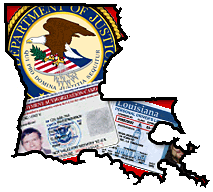 A $50,760 settlement by the DoJ against Brand Energy and Industrial Services and its subsidiary, Industrial Services LLC (ISI), a Louisiana company, proves the need for careful understanding of and adherence to Form I-9 documentation rules and best practices. According to their press release, Justice Department Settles Allegations of Employment Discrimination by Louisiana Industrial Services Company, the settlement resolved “allegations that ISI engaged in a pattern or practice of discrimination against non-citizens in the hiring and employment eligibility verification process.”
A $50,760 settlement by the DoJ against Brand Energy and Industrial Services and its subsidiary, Industrial Services LLC (ISI), a Louisiana company, proves the need for careful understanding of and adherence to Form I-9 documentation rules and best practices. According to their press release, Justice Department Settles Allegations of Employment Discrimination by Louisiana Industrial Services Company, the settlement resolved “allegations that ISI engaged in a pattern or practice of discrimination against non-citizens in the hiring and employment eligibility verification process.”
This case involved the company’s termination of an employee–who was an immigrant authorized to work in the U.S.–after he could not comply with ISI’s request to provide specific employment eligibility documents, a request that went beyond what’s required by law. According to the press release, the DoJ found that one of ISI’s offices would only accept documentation issued by the Department of Homeland Security from non-immigrants for the purpose of verifying employment authorization, whereas U.S. citizens and other non-immigrant employees were not asked to produce specific I-9 documentation.
The Immigration and Nationality Act’s (INA’s) prohibits employers from discriminating against work-authorized employees during the hiring and employment eligibility verification process. When completing a Form I-9, the rules clearly state that “Employers are not permitted to request more or different documents than are required or to refuse to honor documents tendered that reasonably appear to be genuine and to relate to the individual presenting the document.”
The United States Citizenship and Immigration Services (USCIS) publishes The Handbook for Employers, Instructions for Completing Form I-9 (Rev. 06/01/2011), also known as the M-274, to provide guidance to employers on how to complete the Form I-9 . All HR staff or managers who complete I-9s should, at a minimum, familiarize themselves with this handbook. The handbook’s instructions for completing Section 2, as well as the instructions on the I-9 form itself, describe which List A or List B and C document combinations are acceptable. Of course, it’s always a good idea to consider consulting with an immigration attorney to make sure your I-9 processes and procedures are in compliance, especially when facing uncommon or unfamiliar employment eligibility documents. Using a good electronic I-9 system can also help prevent accidental over-documentation. A well-designed electronic I-9 system can provide automatic selections that ‘force’ proper Section 2 documentation choices, and lock in ONLY appropriate issuing authorities and documentation combinations.
Disclaimer: The content of this post does not constitute direct legal advice and is designed for informational purposes only. Information provided through this website should never replace the need for involving informed counsel on your employment and immigration issues.
To learn more about how I-9 Compliance Software can help you comply with Form I-9 and E-Verify requirements, click here.